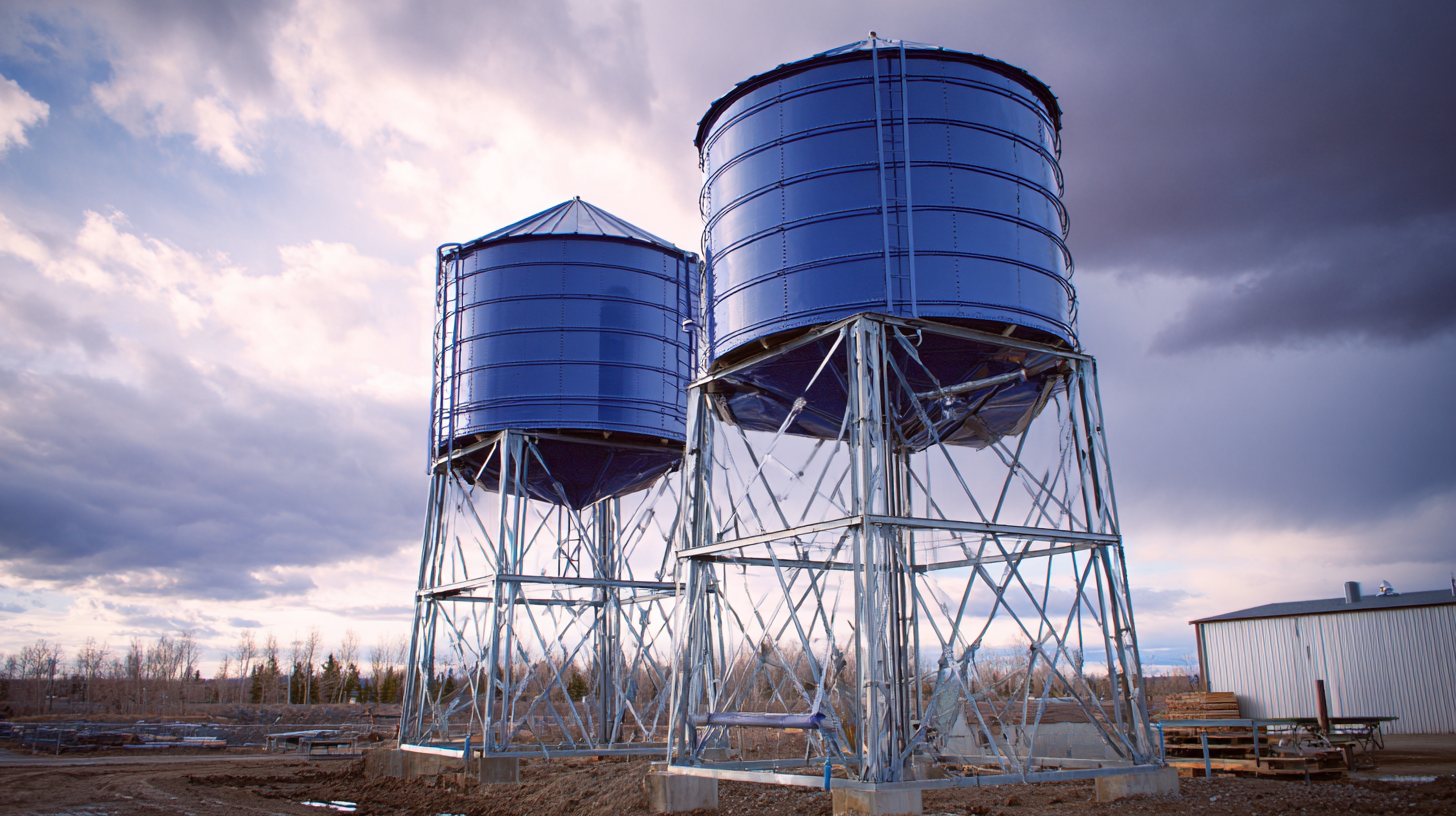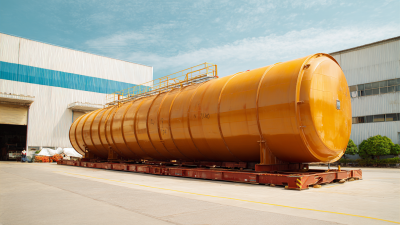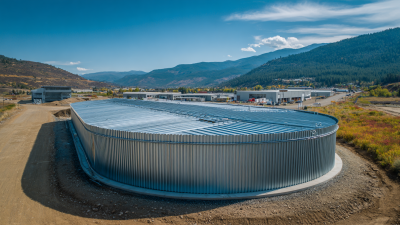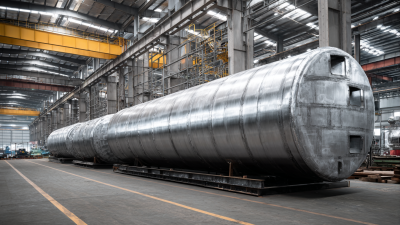When it comes to efficient water storage solutions, overhead tanks play a pivotal role in ensuring a steady supply of water in both residential and commercial settings. With their elevated positioning, these tanks utilize gravity to distribute water effectively, minimizing the need for pumps and reducing energy consumption. In this blog, we will explore the seven best overhead tank solutions, each tailored to meet diverse needs and preferences. We will dive into various materials, capacities, and designs, providing insights on their advantages and suitability for different applications. Whether you are considering an overhead tank for your home, business, or agricultural use, our comprehensive guide will equip you with essential information to make an informed decision, ultimately enhancing your water storage efficiency and sustainability.

Overhead water tanks are essential components in modern water storage solutions, particularly in urbanized areas where demand for efficient water delivery is high. According to a report by the World Health Organization, approximately 2 billion people globally lack access to safely managed drinking water, highlighting the critical need for innovative storage solutions. Overhead tanks not only help store potable water effectively but also play a vital role in maintaining pressure throughout distribution systems, ensuring that water reaches high-rise buildings and distant areas without deterioration in quality.
The importance of overhead water tanks is underscored by their ability to facilitate gravity-fed systems, which reduce the reliance on energy-intensive pumps. A study conducted by the American Society of Civil Engineers suggests that implementing overhead storage solutions can significantly lower operational costs and energy consumption, with potential savings of up to 30% in some urban setups. Furthermore, these tanks can be constructed from various materials, including reinforced concrete and high-density polyethylene, enhancing their durability and lifespan. As demand for sustainable and resilient water systems continues to grow, overhead tanks emerge as a critical solution to modern water storage challenges.
When selecting an efficient overhead water tank, certain key features can significantly enhance your water storage system. First, consider the material;
polyethylene tanks are highly favored due to their UV resistance and corrosion-free nature, making them ideal for long-term use. According to a report by the Water Quality Association, tanks made from high-density polyethylene (HDPE) have been shown to maintain water quality more effectively compared to other materials, thereby reducing the risk of contamination.
Another crucial aspect is the tank design and capacity. Opt for tanks with proper insulation to minimize evaporation and maintain water temperature. A study published by the American Society of Civil Engineers noted that insulated tanks could reduce energy costs by up to 30%. Furthermore, make sure the tank has adequate ventilation to prevent algae growth, which can compromise water quality.
Tips for optimal performance include regularly checking for leaks and cleaning tanks at least twice a year to prevent sediment buildup. Additionally, install a reliable filtration system to ensure water purity, as untreated water can lead to health risks. Utilizing these guidelines will help ensure you select an overhead water tank that not only meets your needs but also promotes efficient water storage and quality management.
Innovative materials and technologies are playing a crucial role in enhancing water storage solutions, particularly in the context of overhead tanks. Recent studies have indicated that integrating sustainable building materials like biochar not only improves water quality but also mitigates pollution, addressing the pressing issues within urban environments. Biochar's porous nature makes it an effective adsorbent, significantly lowering contaminants in water storage systems, which is essential for maintaining the quality of stored water.
In addition to biochar, advancements in smart materials and energy technologies are paving the way for more efficient water management. The rise of solar-powered systems for water desalination exemplifies this trend. A comprehensive review highlights that solar desalination could effectively alleviate global water shortages, with its deployment still lagging behind conventional fossil fuel methods. Furthermore, the integration of hybrid renewable energy sources for water pumping systems is becoming increasingly relevant, with reports showing that these systems can drastically reduce energy consumption and operational costs, making water storage more sustainable and efficient. The ongoing evolution in materials science and renewable technologies is essential for driving innovation in water storage solutions, ensuring they meet the challenges of the future.
When it comes to ensuring the longevity and efficiency of overhead water storage tanks, following best installation practices is paramount. According to the Water Quality Association, improper installation can significantly affect both the tank's lifespan and the water quality, leading to costly repairs and health risks. A well-installed overhead tank should be placed on a strong and stable foundation to prevent any structural failures. Furthermore, the tank must be located away from direct sunlight and pollutants to maintain water quality and prevent degradation of the materials.

Tips: Always choose corrosion-resistant materials like fiberglass or high-grade polyethylene for your tanks. These materials not only enhance durability but also reduce maintenance costs over time.
In addition to using high-quality materials, proper installation techniques are crucial. The tank should be securely anchored and leveled to distribute weight evenly. The positioning of inlet and outlet pipes is also vital – ensure they are carefully planned to minimize turbulence and prevent sediment buildup. A report by the American Water Works Association highlights that proper water flow management can extend the functional life of storage systems by up to 20%.
Tips: Regular inspections and maintenance routines should be established to detect any wear and tear early, which can save costs and extend your tank's lifespan.
Maintaining an overhead water tank is crucial for ensuring its optimal performance and longevity. Regular maintenance practices not only prolong the life of the tank but also enhance its efficiency in storing water. According to a comprehensive survey on energy storage technologies, proper management and upkeep can significantly improve both the operational performance and safety of water storage systems. It is imperative to inspect the tank periodically for any signs of wear or damage, which can lead to leaks or contamination. Keeping the inlet pipe design optimized is another key factor; studies have shown that well-designed inlet systems can improve the self-cleaning ability of tanks, reducing the need for frequent manual cleaning.
Additionally, considering the advancements in related technologies, such as heat pump water heaters, can also be beneficial. These systems, which transfer heat from the surrounding air for efficient water heating, align well with the sustainable practices of water management. Keeping an eye on technological developments in water purification and filtration can further enhance water quality and ensure that the stored water remains safe for use. As highlighted in recent reports, effective maintenance not only conserves resources but also aligns with broader environmental goals by optimizing the use of energy and reducing waste in water systems.







